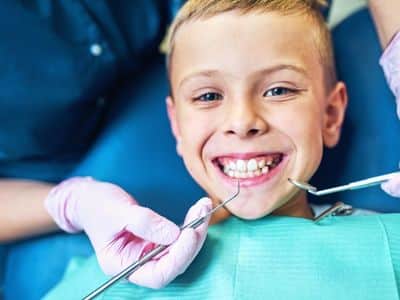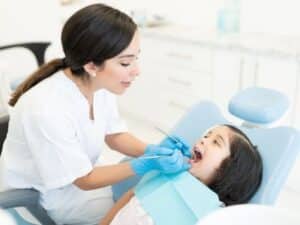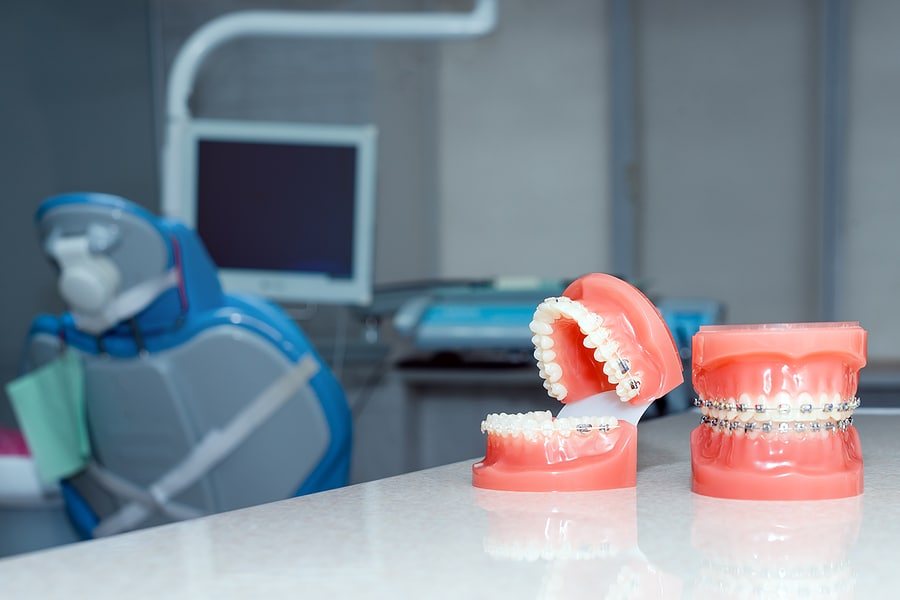As parents, we want what’s best for our children, and this includes their oral health. That being said, teaching them the basics of brushing and flossing will only take them so far and trips to the orthodontist may be due soon. Learn more about the importance of early orthodontics in New York for your kids healthy teeth in this article!
Signs of Orthodontic Concerns in Children
Diagnosing orthodontic concerns as early as possible is important in order to fix the issues and make way for strong kids healthy teeth. If your child has any of these indicators below, then they will greatly benefit from pediatric orthodontics.
#1 – Crooked or crowded teeth.
If your child’s adult teeth are crowding other teeth or erupting crooked, then orthodontic treatment may be necessary. A relatively minor treatment can help prevent this issue from getting any worse.
#2 – Difficulty speaking.
If your child has a misaligned jaw or has problems with their teeth, it can make it difficult for them to pronounce specific words.
#3 – Mouth breathing.
If your child is a mouth breather, the habit can damage the structure of their jaw. Additionally, it can trigger gingivitis and an open bite.
#4 – Thumb-sucking.
Thumb-sucking is normal for kids that are two to four years old. However, if they still do that by the time permanent teeth start to grow, a possible reason behind this is that they’re trying to reduce developing problems like protruding or crowded teeth.
#5 – Early or late loss of baby teeth.
On average, kids would start losing their baby teeth when they reach the age of six or seven, and it continues up until they are 12 years old. If your child loses baby teeth way earlier or later than typical, it could be a sign of a developing orthodontic issue.
#6 – Crooked jaw.
A crooked jaw is when your child’s jaw shifts while eating or is noticeably misaligned. Neglecting this issue can worsen over time.
#7 – Difficulty eating.
If your child has to adjust their jaw in order to chew properly, this is a clear indication that they have issues with their jaw and possibly even their teeth.
The Different Kinds of Orthodontic Treatment for Kids Healthy Teeth
Early orthodontics is important because of the fact that it’s much easier to correct the concerns while the child’s jaw is still developing. The bone structure in a child is not as stiff as compared of an adult. While additional treatment may be necessary, it is typically less complex and much shorter
A lot of oral appliances, whether fixed or removable, can be used to shift the child’s teeth, retrain muscles, and influence jaw growth. The following devices apply gentle pressure on the child’s teeth and jaw:
Braces.
This is the most well-known fixed oral appliance. The braces system is comprised of brackets, wires, and bands.
Aligners.
This is a popular alternative to conventional braces among teenagers. Clear aligner trays such as Invisalign are virtually invisible or difficult to notice.
Space maintainers.
Space maintainers can either be removable or fixed, allowing adult teeth to erupt into place by allotting available space for them.
Palatal expanders.
Palatal expanders widen the arch of the upper jaw.
When Can My Child Undergo Orthodontic Treatment?
According to dentists, there are three stages of orthodontic treatment. These stages are age-related and explained in detail below.
First stage: early treatment (2-6 years old)
The goal of early orthodontic treatment is to assist and regulate the width of both dental arches. Additionally, early treatment provides ample space for the adult teeth to erupt in their ideal positions. Your child is suitable for early treatment if they have lost their baby teeth quite early, have biting difficulties, if their jaw grinds or clicks during movement, and if they’re a mouth breather.
Throughout the early treatment phase, the dentist teams up with parents and children in order to eradicate habits that are orthodontically harmful, such as thumb sucking or excessive pacifier use. If needed, the dentist can also offer dental appliances that promote healthy jaw growth and hold space for adult teeth or prevent the teeth from traveling into incorrect positions.
Second stage: middle dentition (6-12 years old)
The goal of the second stage is to correct misaligned jaws, fix crossbites, and start the process of straightening misaligned permanent teeth gently. Middle dentition marks a developmental timeframe when both the hard and soft tissues are flexible. This can even be the right time to fix a severe malocclusion.
Just like the first stage, the dentist can also provide the child with a dental appliance. However, if the child is given fixed dental appliances, then they should know how to properly take care of them in order to decrease the chances of developing staining or tooth decay.
Stage 3: adolescent dentition (13+ years old)
The third stage is what comes to most parents’ minds when they think of orthodontic treatment. The main goals of this stage comprise improving the overall appearance of the child’s smile and fixing the alignment of the permanent teeth.
Adolescents may be instructed by their Orthodontist in Middletown to wear retainers in order to prevent the teeth from regressing back into their original positions.
How Can Early Orthodontics Help My Kids Healthy Teeth?
Early orthodontics can help your child bite and chew properly, as well as be able to speak clearly. Furthermore, an appealing smile is another benefit of getting orthodontic treatment which can boost your child’s self-confidence. Lastly, having straight teeth decreases the risk of developing gum disease and tooth decay.
Conclusion
Now that you’ve learned about the importance of early orthodontics for your kids healthy teeth, why not turn their dreams into a reality and invest in a smile makeover? You can schedule a free consultation with our team of dental experts at Bracesetters today in order to assess your child’s dental situation and determine the best treatment option for them. What are you waiting for? Send us a message today!




